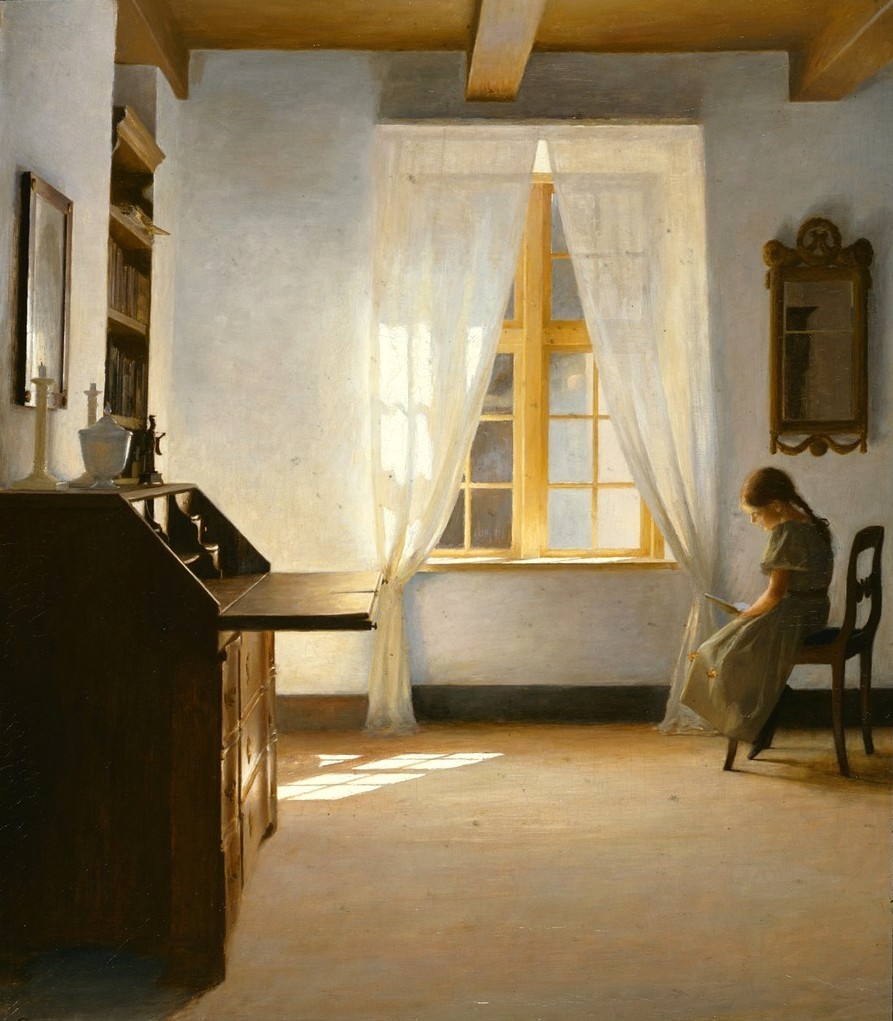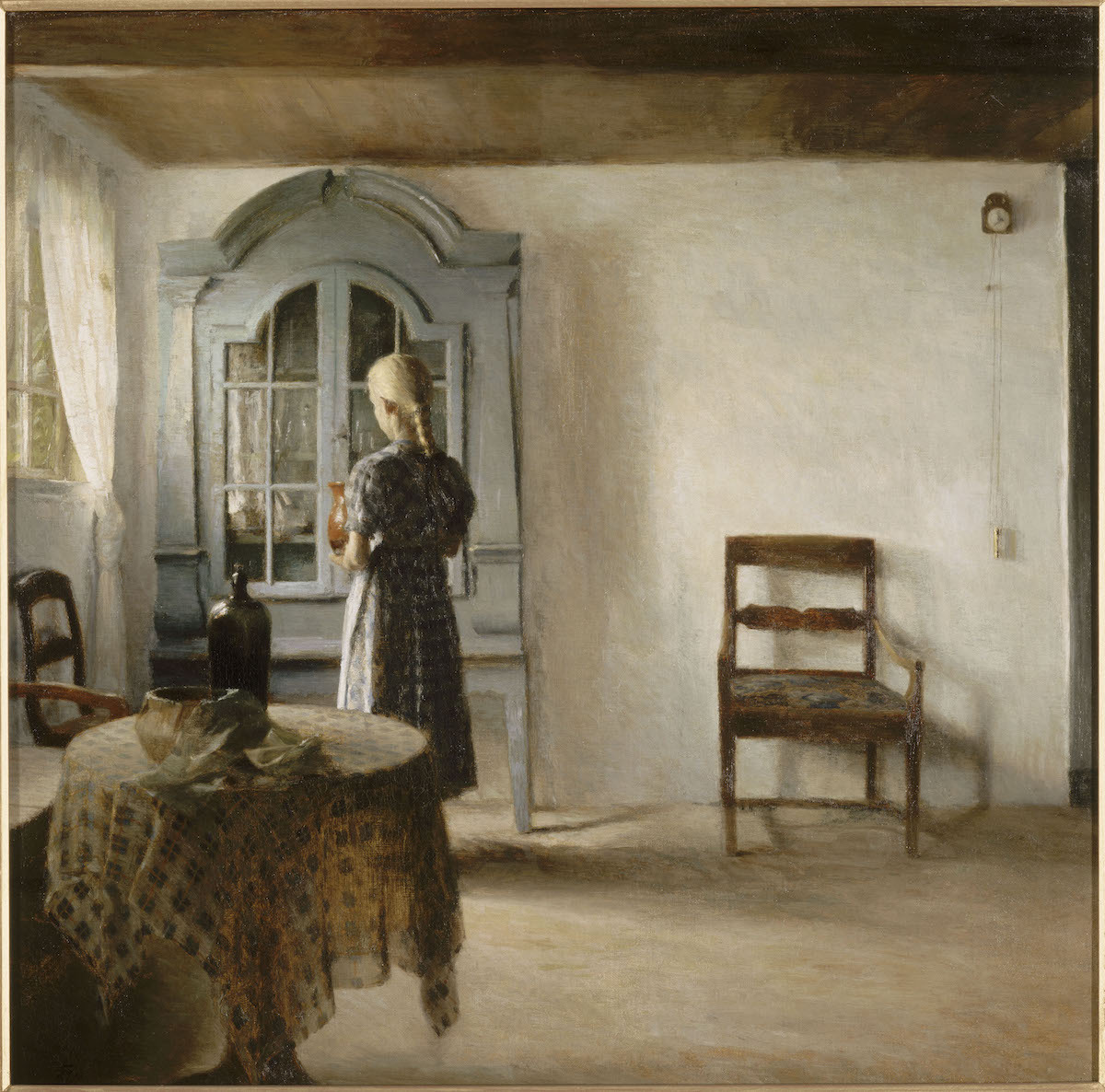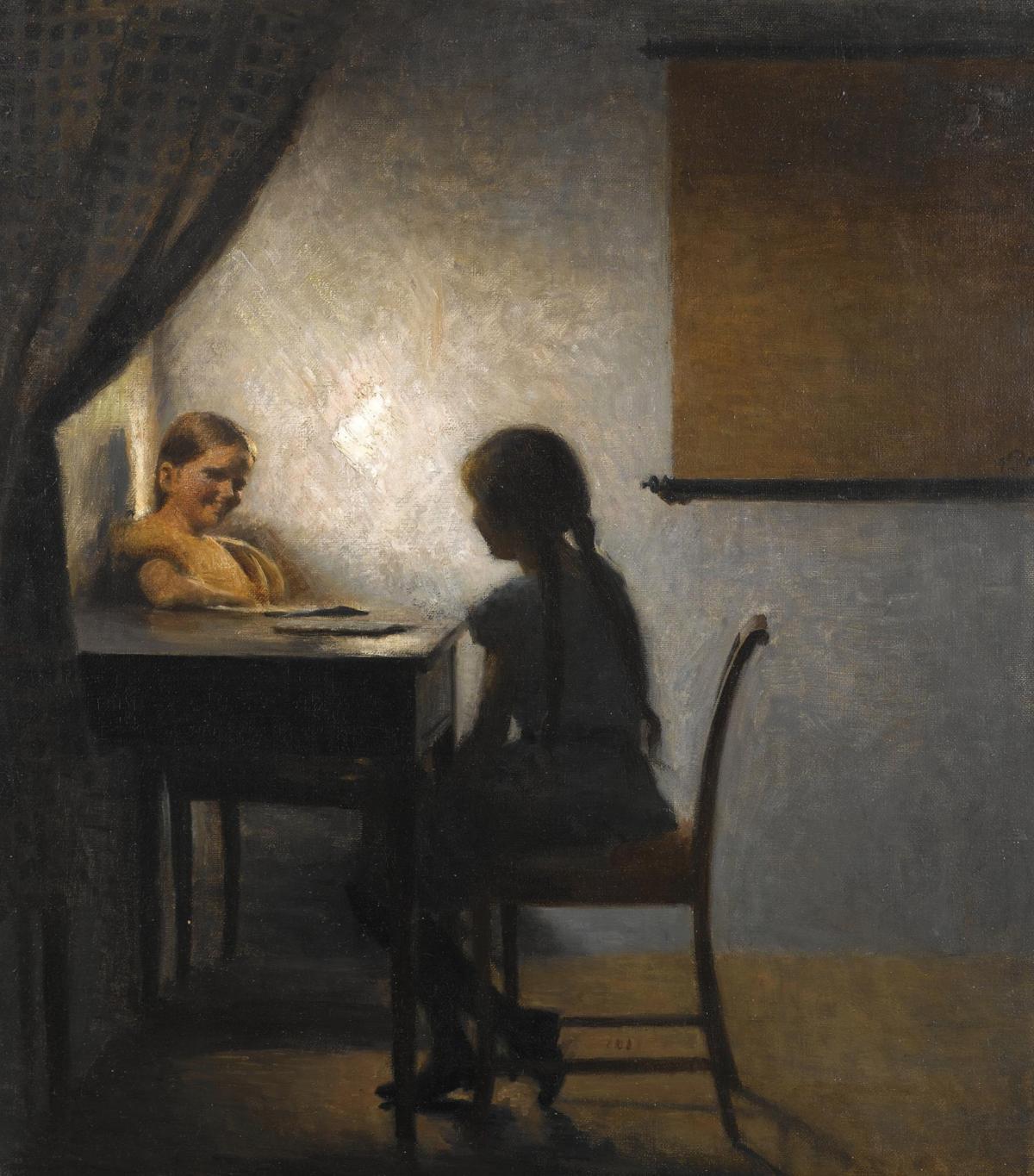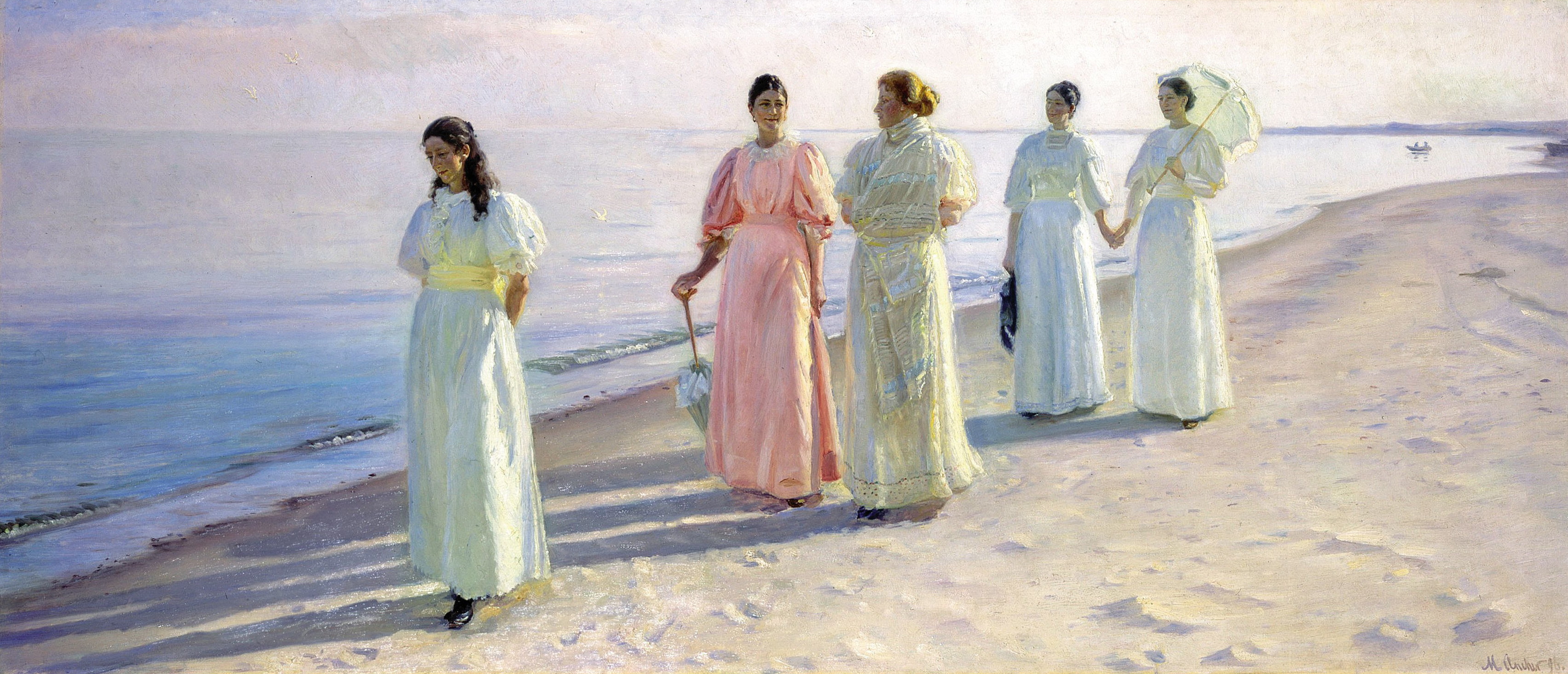“In solitude I question myself and read my soul. I dread that shroud which imprisons me, which moves me to see all things through the vaporous clouds of dreams and imaginings. I seek to look upon the face of reality. It awes me. I place my fingers upon the throbbing pulse of actual life, repeating to myself: Hugo is coming. We may be married soon… married, married… Oh, I have lived too long in a world of my own making and I have suffered by the destruction of it. Do I know the truth of things now? Do I know love, and wedded love? Am I true woman?”
(The Early Diary of Anais Nin, 1920-23)
 Gerda Wegener, The Bridal Recessional or The Little Bride (La petite mariée), 1927
Gerda Wegener, The Bridal Recessional or The Little Bride (La petite mariée), 1927
Gerda Wegener was a female Danish painter who loved to paint women, often in a very eroticised manner, but her painting “The Bridal Recessional – La petite mariée” shows a more delicate side to her work, and indeed, eroticism and delicacy are intertwined in her paintings and always coexist in a beautiful and harmonius way. The painting shows a bride and a groom, leaving the church probably, followed by their entourage. The bride, holding onto her husband’s arm, is dressed all in white, as is usual, but Wegener really does paint white clothing beautifully. Even her tights are white and her long veil, decorate with a headband, is held by a little girl in a yellow gown. The wedding guests are all showing different emotions, some smiling and some holding handkerchief to wipe off poignant tears. In the background, only a few trees, houses and towers can be seen. The most interesting thing in this painting, besides the lovely bride, is how artificial in a deligtful way everyone looks, truly, doll-like I might say.
There is not much depth and poignancy about this wedding scene, as there perhaps is in some other paintings in art history. It is very decorative, as most of Wegener’s paintings are anyway, but that doesn’t lessen its beauty in my eyes nor does it make it any less interesting. Still, despite the bride’s doll-like face – with those big blue eyes and bright rosy cheeks – there is an emotion hiding behind the mask-like stillness, a certain dynamic going on between her and her husband; while he is gazing down at her attentively, she seems to be gazing out into the distance, delicate and fawn-like, with a look of wistfulness perhaps, a slight worry, in her eyes, which is perhaps natural on the ocassion, but still made me think of something from Anais Nin’s diary entry, written just prior to her marrige to Hugo in 1923, around the same time that Wegener’s paintings was painted; “I place my fingers upon the throbbing pulse of actual life, repeating to myself: Hugo is coming. We may be married soon… married, married… Oh, I have lived too long in a world of my own making and I have suffered by the destruction of it. Do I know the truth of things now? Do I know love, and wedded love? Am I true woman?”
“Sad-veiled bride please be happy, handsome groom give her room…”
(The Smiths, I Know It’s Over)
Something about Wegener’s paintings, about the way she paints female figures, makes me think about the paintings of Marie Laurencin and also Boris Grigoriev’s painting “The Model”, all of which were painted in the 1920s, so the same time as Wegener’s paintings. Considering to which extend Wegener devoted herself to painting women and the world through a feminine lense, something that the aforementioned painter Marie Laurencin said can be equally applied to Wegener’s art, Laurencin said: “Why should I paint dead fish, onions and beer glasses? Girls are so much prettier.” I am sure Gerda Wegener would have agreed!
The world that she has created in her paintings is a very feminine one; very delicate, and sweet, and pink, and doll-like and spring-like and fragrant. The sweetness, rosyness and idealisation were, at times, a far cry from the actual life that Wegener was leading. After an exciting youth and a prolific career, she went through the ‘loss’, followed by divorce, of her first husband because he started living as a woman, a life in Marocco with her second husband, a second divorce, financial instability and alcoholism, and a death in relative obscurity. She died in in late July 1940 in Fredericksberg, Denmark, shortly after the Nazis invaded the country. Perhaps for the best that she did not see what was to come.




































